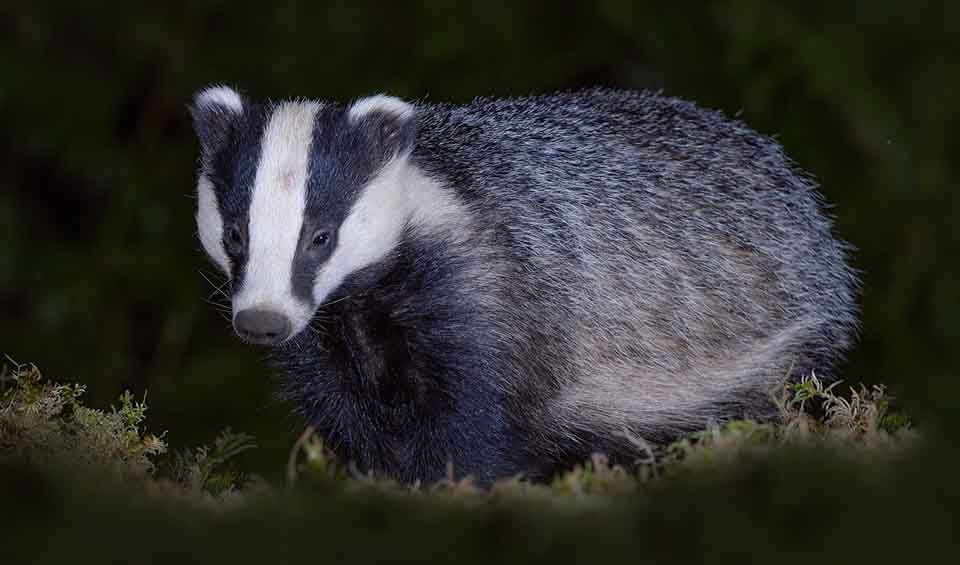Characterized by dark stripes that extend from their nose to their eyes and ears, separated by a white stripe in the middle, European badgers exhibit a striking appearance that sets them apart from other members of the mustelid family. Their upper coat is grizzled grey, with each hair featuring a white base and a darker tip, while their underside typically displays black or dark grey coloring.
In addition to their striking appearance, European badgers possess a diverse and adaptable diet consisting of both animal and plant matter. They are opportunistic feeders, consuming a wide variety of food items depending on availability and seasonality. Earthworms rank among their favorite prey items, with European badgers capable of consuming several hundred of these invertebrates in a single night. In addition to earthworms, they also feed on small mammals, such as mice and voles, as well as large insects, carrion, tubers, and cereals.
Despite their primarily nocturnal habits, European badgers demonstrate flexibility in their foraging behavior, especially when food resources are scarce. In times of shortage, they may venture out during the day in search of sustenance, demonstrating their resourcefulness and adaptability in the face of adversity.
In addition to their foraging habits, European badgers exhibit complex social behaviors and hierarchical structures within their social groups, known as clans. These clans typically consist of related individuals, including adults and their offspring, and are organized around a central burrow system known as a sett. Within the clan, badgers engage in cooperative behaviors such as grooming, scent marking, and communal care of the young, fostering strong social bonds and ensuring the collective well-being of the group.
Distribution
 Afghanistan
Afghanistan Albania
Albania Armenia
Armenia Austria
Austria Azerbaijan
Azerbaijan Belgium
Belgium Bosnia And Herz.
Bosnia And Herz. Bulgaria
Bulgaria China
China Croatia
Croatia Czechia
Czechia Denmark
Denmark Egypt
Egypt Estonia
Estonia Finland
Finland France
France Georgia
Georgia Germany
Germany Greece
Greece Hungary
Hungary Iran
Iran Iraq
Iraq Ireland
Ireland Israel
Israel Italy
Italy Jordan
Jordan Kyrgyzstan
Kyrgyzstan Latvia
Latvia Lebanon
Lebanon Lithuania
Lithuania Luxembourg
Luxembourg Moldova
Moldova Montenegro
Montenegro Netherlands
Netherlands North Macedonia
North Macedonia Norway
Norway Poland
Poland Portugal
Portugal Romania
Romania Russia
Russia Serbia
Serbia Slovakia
Slovakia Slovenia
Slovenia Spain
Spain Sweden
Sweden Switzerland
Switzerland Syria
Syria Turkey
Turkey Turkmenistan
Turkmenistan Ukraine
Ukraine United Kingdom
United Kingdom Uzbekistan
UzbekistanAnything we've missed?
Help us improve this page by suggesting edits. Glory never dies!
Suggest an editGet to know me
Terrestrial / Aquatic
Altricial / Precocial
Polygamous / Monogamous
Dimorphic (size) / Monomorphic
Active: Diurnal / Nocturnal
Social behavior: Solitary / Pack / Herd / Group
Diet: Carnivore / Herbivore / Omnivore / Piscivorous / Insectivore
Migratory: Yes / No
Domesticated: Yes / No
Dangerous: Yes / No






